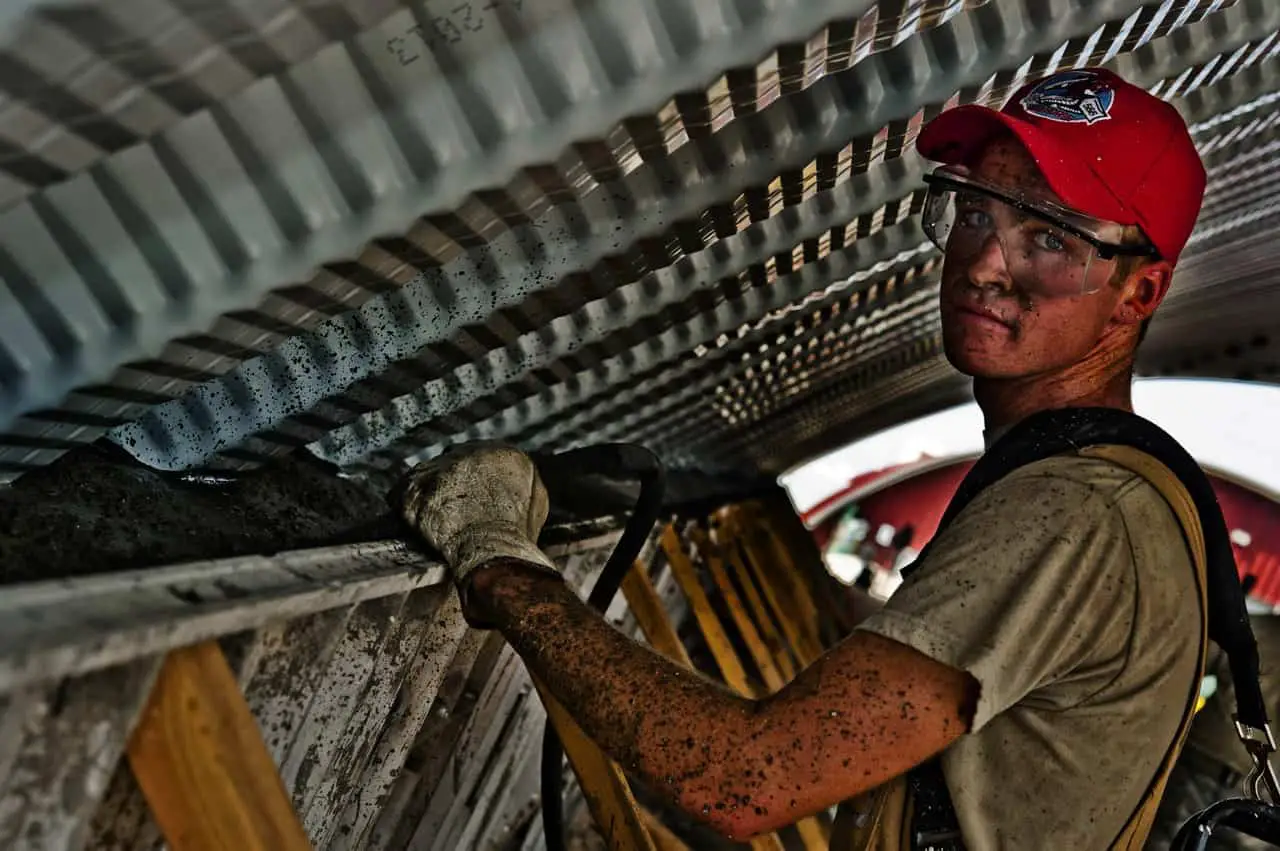It’s so weird: you feel healthy enough when you spend time at home, but every few weeks you’re at work, you start getting congested, or feverish, and you’re generally run down. It’s probably just because you’re surrounded by so many people, right? It wouldn’t be something like sick building syndrome, would it? Wait, what is that anyway?
Sick building syndrome is a condition in which you develop an illness or symptoms due to the air quality in a building. This building doesn’t exclusively have to be your workplace, but anywhere in which you spend considerable time.
Are you fascinated by the premise of sick building syndrome? Do you believe you may have it but you want to know more about it before you take action? If so, then this article is for you. We’ll dive deep into sick building syndrome, including its symptoms, what causes it, and what to do if it’s a problem you’re battling at the workplace.
What Is Sick Building Syndrome?
As we said in the intro, sick building syndrome is linked to the quality of the air inside a building, which is often lacking. Now, you might think then that this condition is limited to exclusively old buildings, but that’s not true. In fact, the United States Consumer Product Safety Commission or CPSC says that, of remodeled and new buildings, roughly 30 percent don’t have air quality that’s up to par.
says that, of remodeled and new buildings, roughly 30 percent don’t have air quality that’s up to par.
It was first in the 1970s that sick building syndrome entered the workplace vernacular. As computers began appearing in more offices, lighting wasn’t the greatest, and chemicals were used in more paints, carpets, and other office fixtures, sick building syndrome became a viable concern. Also, that decade went through an energy crisis.
When you have sick building syndrome, you could develop a slew of symptoms. These can affect your neurological and respiratory systems as well as your skin. It’s easy enough to believe you’re just sick because you work around a lot of people, as we discussed in the intro. Even if your workplace doesn’t have many employees, you can attribute your recurring illnesses to the weather, the season, even allergies or other outside factors.
It’s true the above could be what’s ailing you, but it could also be sick building syndrome.

What Are Sick Building Symptoms?
So you can begin to figure out if sick building syndrome has caused your recurring illnesses, let’s take a deeper look at the symptoms you may have. Now, it’s important to mention that symptoms can vary from person to person with sick building syndrome. That’s because these people often don’t work in the exact same building. Thus, the same triggers don’t exist that could manifest symptoms.
Even if you and a coworker both had sick building syndrome, your symptoms could differ as your bodies react in different ways.
Thus, general sick building symptoms to keep an eye on include the following:
- – Chills
- – Fever
- – Body pain and aches
- – Nausea
- – Moodiness and irritability
- – Exhaustion
- – Forgetfulness
- – Concentration issues
- – Wooziness or dizziness
- – Headaches
- – Skin rashes that are often quite itchy and lead to dry skin
- – Nasal burning feelings
- – Sneezing
- – Nose runniness
- – Chest tightness
- – Inability to breathe
- – Irritation and soreness in the throat
Just because you have one or more of the above symptoms doesn’t always mean it’s sick building syndrome. It’s just likely.
It’s also possible to become symptomatic only when you leave work, but not when you’re actually there. This may not seem like a case of sick building syndrome, but it often is. It’s because of the exposure to the allergen or trigger. Symptoms don’t really kick in until after that exposure has passed, aka when you leave work and go home.
You should also know that some patients with sick building syndrome are asymptomatic, which means they don’t experience any of the above symptoms.

What Causes Sick Building Syndrome?
Okay, so we’ve discussed what symptoms you might have if you’re suffering from sick building syndrome. What else, if anything, besides bad air quality can lead to your consistent symptoms? It’s often hard to pinpoint the exact cause(s), but there are a few identifiers that have cropped up over the years.
They are:
- – Industrial plant and motor vehicle exhaust as well as other outdoor contaminants that make their way inside the building
- – The volatile organic compounds or VOCs in upholstered furniture, cleaning agents, carpeting, adhesives, and paint in your office
- – Animal and insect droppings inside of or around the proximity of the building
- – Low humidity or heat
- – Fax machine and printer ozone
- – Carbon monoxide
- – Pesticides
- – Asbestos
- – Formaldehyde, which can hide in wooden flooring and furniture, especially if it’s older
- – Fungus or mold growing in or near the building
- – Tobacco or cigarette smoke
- – Dust
- – Lack of proper lighting and ventilation
Even factors such as the volume of your work environment, how stressful your job is, and the morale of your workplace could potentially contribute to sick building syndrome.
How Do You Know If You Have Sick Building Syndrome?
As we mentioned in the last section, most medical experts agree that pinpointing the exact cause of sick building syndrome is anything but easy. That said, if you recognize your symptoms in the list we shared and you sense your office has some of the above chemicals and/or contaminants, then it’s important you go to your doctor.
Tell them you suspect your recurring illness is a case of sick building syndrome. Look at that list above and jot down as many symptoms that seem fitting. Then, go through the list of causes and add the ones that make the most sense. Present this information to your doctor.
If you can remember how often you get sick, or—even better—if you’ve maintained an ongoing illness log, this can help your doctor out greatly.
Prepare to undergo a lot of testing if your doctor thinks you may have sick building syndrome. They will want to ensure it’s not something else causing your symptoms, such as allergies, asthma, or recurrent colds. They might not even make a firm diagnosis during that appointment. Instead, your doctor may ask you to keep a log of symptoms and suspected causes for about a month (if you haven’t already done this). You’ll also have to write down where the symptoms manifested.
When you see your doctor again, they can then typically confirm the diagnosis.

Sick Building Syndrome Recourse
First thing’s first, and that’s getting your health back on track. Depending on which symptoms afflict you most, your doctor will recommend a treatment. Make sure you follow this to the letter.
Of course, even once you do feel better, if you go back to the same environment that makes you sick, then your symptoms will come back. New ones could also appear. That’s why, in addition to getting a medical treatment, you need to talk to your boss, manager, or HR person.
Hopefully, they take your complaints of sick building syndrome seriously. Sadly, though, that doesn’t always happen. If that’s what you’re going through, you might reach out to the Building Owners and Managers Association International or BOMA. You can also get in touch with the Occupational Safety and Health Administration or OSHA and lodge a formal complaint with them. Even the Environmental Protection Agency or EPA might be receptive to your issue.
In talking to one of these organizations, you can potentially request an investigation into the air quality at your office. It’s especially ideal if several coworkers do the same. The more evidence you have for the above organizations, the better. For instance, if you found records of calls or emails where health issues got discussed, forward them. If you can see visible problems such as mold, water leaks, or the like, photograph and send these as well.
If the problem persists and your workplace does nothing about it, you could potentially get disability or worker’s compensation payments through OSHA. Sometimes, getting to this point means consenting to both a psychiatric exam as well as a home inspection. (We have written a related article – What Is LEED Certification? (LEED Rating System, Certification Process And Twelve LEED Benefits) )
)
If worst comes to worst and you realize nothing will be done about your workplace, then it’s time to find another job.
Related Questions
How often do companies complain of suspected cases of sick building syndrome? Most complaints related to sick building syndrome go to the National Institute for Occupational Safety and Health or NIOSH. About a decade after sick building syndrome became a term, complaints of environmental quality spiked, with 150 of these complaints in 1980. Of all the complaints lodged to NIOSH, those constituted eight percent.
As sick building syndrome became a greater concept, the complaint percentage went up. It was 52 percent in 1990. We’d say that’s a fairly decent rate of complaints of sick building syndrome, then. It’d probably be even higher today.
How do you prevent sick building syndrome? Everyone wants to stay healthy at work and at home. To keep sick building syndrome symptoms at bay, we recommend trying the following:
- – Stay away from chemicals like insecticides and bleaches; if you must use these, then follow the usage directions very carefully
- – Get up and take a break every now and then, strolling through the office
- – Plan computer breaks for your eyes where you spend a minute or two looking at something that’s not a screen
- – Invite fresh air into the office through an open window (just make sure you have permission)
- – Don’t spend all day in the office if you don’t have to; during lunch and on your other breaks, step outside for a few minutes
Join Open Sourced Workplace



